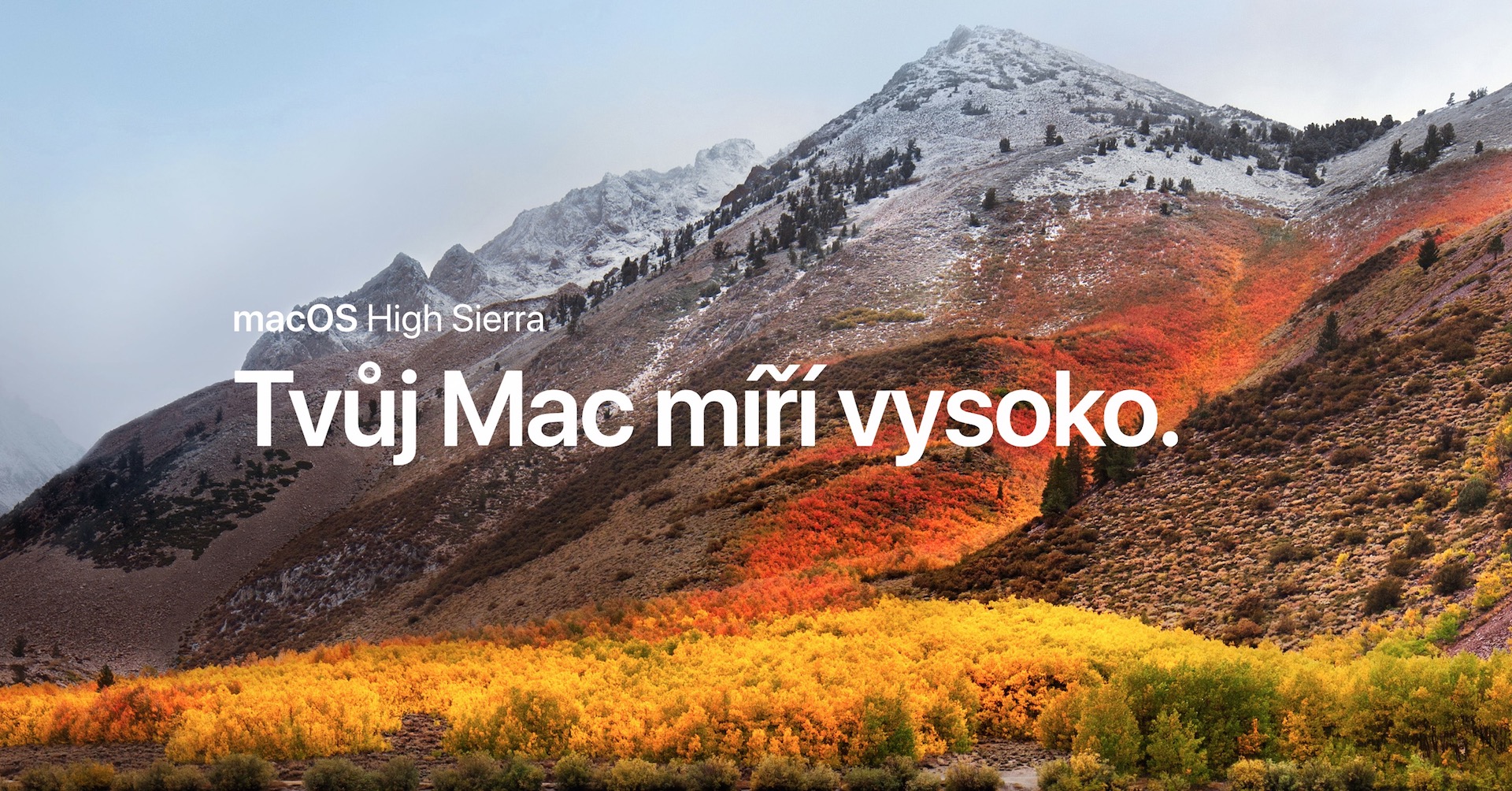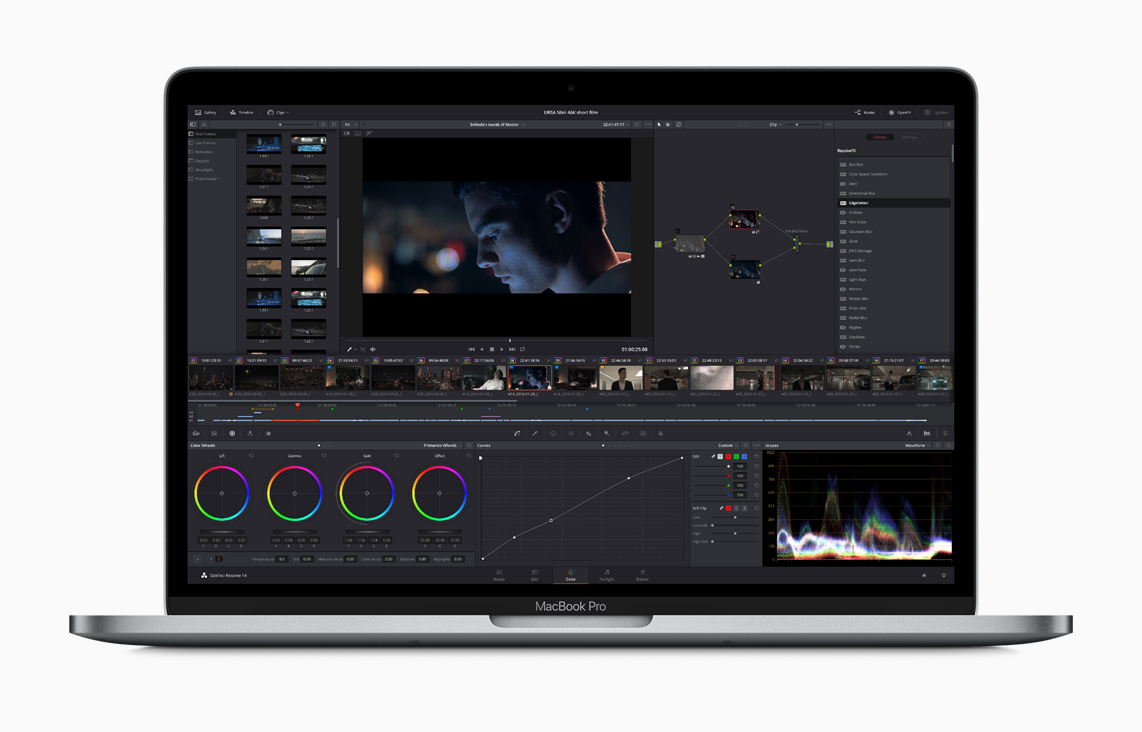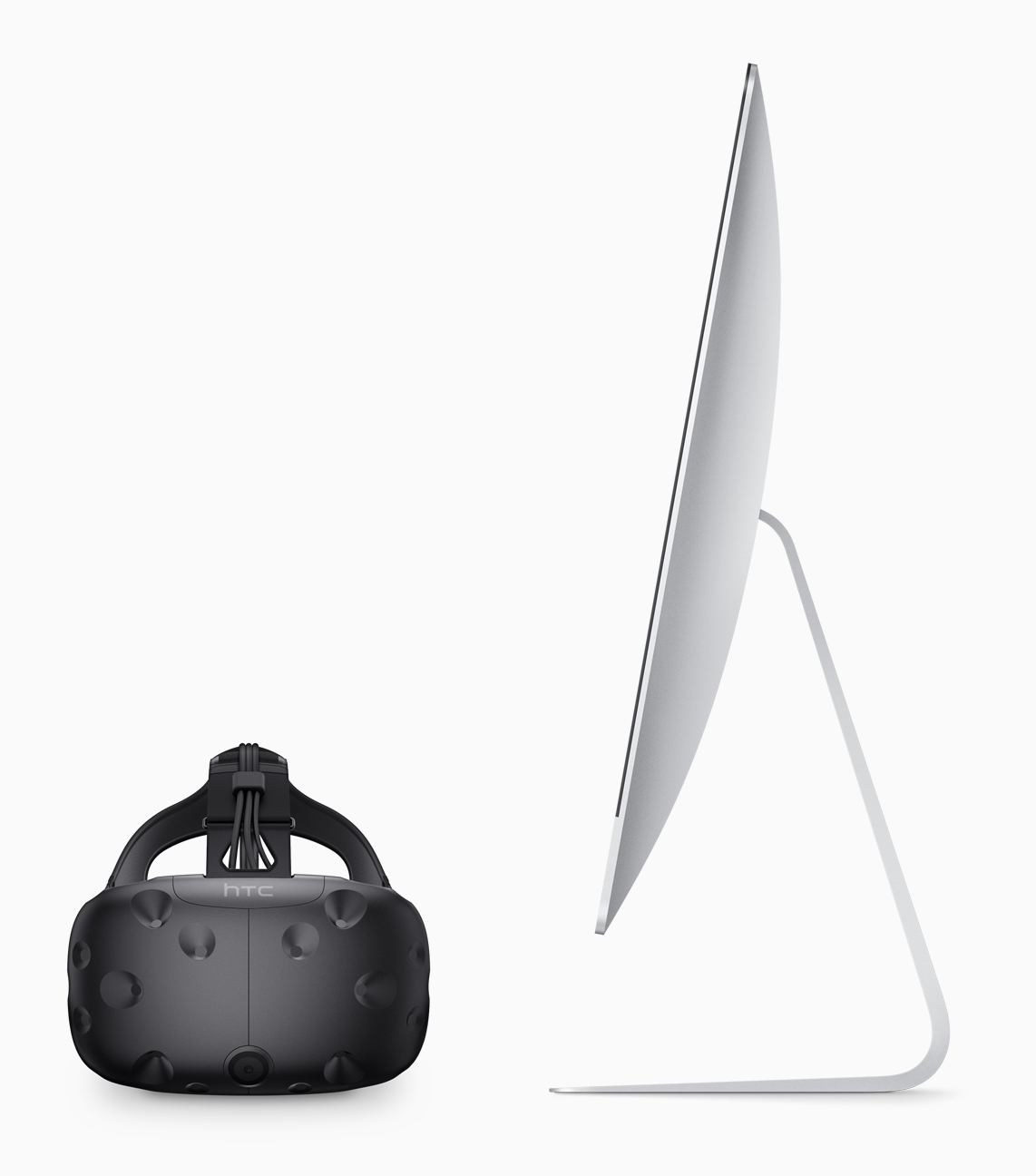macOS High Sierra lives up to its name. It's macOS Sierra on steroids, revamping operating system basics like the file system, video and graphics protocols. However, some basic applications were also updated.
In recent years, Apple has been criticized for not focusing on consistency and reliability in an effort to bring interesting new software every year. macOS High Sierra continues to introduce interesting news, but this time it is more about deeper system changes that are not visible at first glance, but are, at least potentially, fundamental to the future of the platform.
These include the transition to the Apple File System, support for HEVC video, Metal 2 and tools for working with virtual reality. The second group of more user-friendly news includes improvements to the Safari, Mail, Photos, etc. applications.

Apple File System
We have already written about Apple's new file system with the abbreviation APFS several times on Jablíčkář. Introduced was at last year's developer conference, in March the first phase of Apple's transition to it has arrived in the form of iOS 10.3, and now it's also coming to Mac.
The file system determines the structure and parameters of storing and working with data on the disk, so it is one of the most basic parts of the operating system. Macs have been using HFS+ since 1985, and Apple has been working on its successor for at least ten years.
The main specifics of the new APFS include higher performance on modern storage, more efficient work with space and higher security in terms of encryption and reliability. More information is available in a previously published article.
HEVC
HEVC is an acronym for High Efficiency Video Coding. This format is also known as x265 or H.265. It is a new video format standard approved in 2013 and is mainly aimed at significantly reducing the data flow (that is, due to the file size) while maintaining the image quality of the previous (and currently the most widespread) H.264 standard.

Video in the H.265 codec takes up to 40 percent less space than video of comparable image quality in the H.264 codec. This means not only less required disk space, but also better video streaming on the Internet.
HEVC has the ability to even increase image quality, as it enables greater dynamic range (difference between the darkest and lightest places) and gamut (color range) and supports 8K UHD video with a resolution of 8192 × 4320 pixels. Support for hardware acceleration then expands the possibilities of working with video due to lower demands on computer performance.
Metal 2
Metal is a hardware-accelerated interface for programming applications, i.e. a technology enabling more efficient use of graphics performance. Apple introduced it at WWDC in 2014 as part of iOS 8, and its second major version appears in macOS High Sierra. It brings further performance improvements and support for machine learning in speech recognition and computer vision (extracting information from a captured image). Metal 2 in combination with the Thunderbolt 3 transfer protocol allows you to connect an external graphics card to your Mac.
Thanks to the power that Metal 2 is able to generate, macOS High Sierra for the first time supports the creation of virtual reality software in combination with the new 5K iMac, iMac Pro or with MacBook Pros with Thunderbolt 3 and an external graphics card. In conjunction with the arrival of VR development on the Mac, Apple has partnered with Valve, which is working on SteamVR for macOS and the ability to connect the HTC Vive to the Mac, and Unity and Epic are working on developer tools for macOS. Final Cut Pro X will get support for working with 360-degree video later this year.

News in Safari, Photos, Mail
Among the macOS applications, the Photos application underwent the biggest update with the arrival of High Sierra. It has a new sidebar with album overview and management tools, editing includes new tools like "Curves" for detailed color and contrast adjustments and "Selective Color" for making adjustments within a selected color range. It is possible to work with Live Photos using effects such as a seamless transition or a long exposure, and the "Memories" section selects photos and videos and automatically creates collections and stories from them. Photos also now support editing through third-party applications, so Photoshop or Pixelmator can be launched directly in the application, where the changes made will also be saved.
Safari cares more about user comfort by automatically blocking auto-start video and audio playback and the ability to automatically open articles in the reader. It even allows you to save individual settings for content blocking and video autoplay, reader usage and page zoom for individual sites. The new version of Apple's browser also extends care for user privacy by using machine learning to identify and prevent advertisers from tracking users.

Mail enjoys an improved search that displays the most relevant results at the top of the list, Notes has learned to create simple tables and prioritize notes with pins. Siri, on the other hand, got a more natural and expressive voice, and in conjunction with Apple Music, it learns about the user's musical taste, which it then responds to by creating playlists.
iCloud File Sharing, which allows you to share any file stored in iCloud Drive and collaborate on editing it, will certainly please many. At the same time, Apple introduced family plans for iCloud storage, where it is possible to buy 200 GB or even 2 TB, which can then be used by the whole family.
No big news. We just have to release a new version with a new name every year. They are probably quite 'High' at Apple.
So you either didn't see the Keynote or didn't even read the article. This Keynote was probably the best since Steve's death and showed that Apple finally woke up and started making the right decisions again.
Ok
Maybe the best, but otherwise quite weak from my subjective point of view. The beginning with the "news" regarding tvOS did not set the bar very high, and then it continued with the demonstration of a few renders of the so-called professional iMac (hello Apple - the civilized world is counting on cuda) and a speaker, interspersed with the new operating system, which will bring video blocking in the browser as a main feature and the new ios, where a third of the screen will now be taken up by Music-style titles... I am deliberately exaggerating a bit, and I like some things like the approach of ios on the iPad towards the desktop (better split screen, multitasking, multi selection, drag & drop), but it is enough? From the whole keynote I felt a kind of emptiness (or "we haven't done anything in a year, but we'll at least show you a picture of what we'd like to do in the future"), which was talked about with great interest, so much so that some presenters, including the seasoned Craig Due to Federighi's own overexcitement, they almost forgot the content :-) Certainly a lot of things happened under the hood (just look at the other presentations), but if I were to limit myself from a programmer's point of view to the view of, say, an ordinary user, then the more than 100. employees did not show so many results (even in the context of the fact that it is primarily a developer conference). Minor updates to processors and storage used to be done, not even talked about. But it's true that it seems that something is starting to happen, so maybe they won't fall asleep again... How much better would the impression of the keynote be if they showed a "repeat" and, just by the way, it would be immediately available on the apple store. In my opinion, that would be a "old Apple" style.
I guess that's how I see it too
Plus or minus once a year, the HW portfolio changes (now please don't look for an example of a product where this doesn't happen), in that year things are collected that would be worth the release of a major version, so it will be released. Yes, the new Safari and Mail can be updated even to 10.12, but the new FS, Metal, ... is probably worth separating into a new version, isn't it?
It's an opinion. I agree with that, but in my opinion it would be much better if they released new OS as drives and not every year. Although it's getting better, the previous versions (Yosemite, El Capitan...) were pretty buggy.
I don't know, the last 6 intervals between 7 versions (Lion to High Sierra) are a year. Previously 1x 6 months (Cheetah – Puma, 2x plus or minus a year (Puma – Jaguar – Panther), 1x a year and a half (Panther – Tiger) and 3x it was 2 or more years (Tiger – Leopard – Snow Leo – Lion). Now it don't take it in connection with the HW change (as I wrote above), but one way or another, a year is the most often chosen change time (8x out of 13 system upgrades, 8 out of 12 if I'm very bad and I won't count 10.0 on 10.1 :-) ).
Regarding stability - well, we all wish (I'm a Linux user, so I'll write this regardless of the OS) that the "stable" version really comes out without significant errors. But the truth is that only really massive testing (understand usage by ordinary users) will reveal a large part of errors. Plus, those systems (SW in general) are huge compared to 20 years ago.
well, that's true, well... I personally don't care. I'm a person who used to drive betas and I didn't mind any bugs.
However, I have to admit that the stability and quality of Apple's OS is on a completely different level (like better) than Mrkvo$oft. By the way, I'm also a Linux user and unfortunately, I recently told a fellow Linux user how Linux is really bad on the desktop. Sure, it's free and it works, but it really gets on my nerves when I start my laptop out of nowhere and the display doesn't turn on or the wifi doesn't work. In all this, Apple simply leads.
So it works quite OK for me on the desktop, there are errors, but nothing critical. Paradoxically, the supported OS on my laptop (Dell E6420) didn't work very well, on the other hand, Debian or Fedora OK, and Sierra on a 2010 MBP OK.
How will the Sierra build update work? I mean in the context of changing the file system. Before the update, it will be necessary to completely back up the mac on Time Machine (which I do anyway), will the disk be formatted and the installer will restore everything from TM? Does anyone have any idea? Thanks.
It should happen automatically during upgrade.
Still the same garish icons as from the circus - design like cheap Chinese toys.